 When Ms. Gingerlily Lowe, second grade teacher at Nye Elementary in San Diego began teaching online this month, she contemplated how best to get students accustomed to being together separated by COVID-19 and projecting through tiny electronic rectangles on a computer screen. No hugs. No knuckle or elbow bumps, either. The strange distance created in the online classroom environment begged for some humanizing. Children felt lost and needed to be comforted. Their confusion over how to operate their tech, raise a hand, or even to know when to speak was a big problem. Just getting laptops and internet access was a problem for many families who had never had access to the web at home. This is the reality of living near the poverty line. Some very helpful things are just out of reach. Then, with tech turned on, there were all sorts of things could go wrong (and did). Utter confusion about apps, logging in, lost passwords, incorrect browers, unclear directions, confusing district expectations, and the human stuff... interruptions from the family pet, babies crying, Harleys zooming by out the windows, tech malfunctioning, sirens, phones ringing and um, irrelevant and inappropriate spontaneous sharing. For teachers, learning to herd kittens in a tornado would have been so much easier. Add to the chaos, attempting to Mute, Unmute and manage students in Break Out Rooms was just a crazy tall order. But hey, teachers are smart, resilient and they love to laugh! Ms. Gingerlily drew upon her well-earned music leadership skills. She has been with GITC for three years, teaching through the power of song. The music began to make everything feel more "normal" and yet more special. There was a lot to sing about.  Choosing a favorite song to relieve stress, Bobby McFerrin's delightful "Don't Worry, Be Happy!" Ms. Gingerlily (as parents and children call her), invited students to compose their own verses about sheltering at home. What they had to share about their wide-ranging experiences was so eye-opening, we asked to share their verses with you, below. Thank you to the students and parents who agreed to help out! Last month, realizing students needed a way to play along with their teachers and classmates at home, GITC started emergency uke distribution. Teachers and families came forward, masks in place and staying 6 feet away from each other, began to get their ukes from one of our front porch locations. Some wanted to help those families where parents were out of work so GITC started the Play & Pay It Forward fundraising campaign to make scholarship ukuleles possible for students in need. Those parents who felt they could help quietly donated to "pay a uke forward" for another student in need to receive one, too.  In this way, GITC began supporting everyone to bridge the gap from school to home so the musical learning could continue. If you feel moved to contribute, we hope you will. A gift of $20 helps us provide a new Diamond Head ukulele to a student! We are so grateful to Saga Musical Instruments for their help with this project! We want to share with you the understanding of what sheltering and learning at home has been like for these seven and eight year-olds so far. Here are some of their verses and illustrations to the tune of "Don't Worry, Be Happy!" with gratitude to Bobby McFerrin for shining such beautiful light in our lives with his music. You can recite or sing these to yourselves along with this backing track in the key of C. Got a uke? Strum along! https://www.youtube.com/watch?v=km-nz82SOkQ
0 Comments
Want to lead a short, productive, inclusive and joyful music experience in your online classroom? This How-To blog will help you make the process simple and goof-proof. Leading your students in a song online each day can bring them together, establishing a sense of belonging, happiness and normalcy. Done the GITC way, each student can participate, feeling valued and “heard” while hearing others. Together, your students can collaborate and support each other to create something enjoyable. In the face of disruptions, bad news and stress at home, this can do a world of good. You can be the bringer of this goodness. Bye-Bye, Perfection. None of us are trying to win a contest. We are teachers and we want to bring music to our students. They are so eager to make music, they appreciate our efforts. So let's relax, have fun, and show the kids we can all make music. They need it. They need you to lead it. Having the courage to strum and sing on camera will model creative risk taking for them, and will build your skills. You can ask the students for encouragement, be open and honest, and then take the plunge! Remember to mute them while you are leading so you can concentrate. Then unmute them selectively to check for understanding and facilitate class discussions. Your students will need to learn online classroom ground rules and etiquette just like they do at school. Without being in the same physical space, and with tech at their fingertips, they need to know what is and is not okay, how to get your attention appropriately, how to respond to peers. This is all preliminary learning. We hope someone writes a song about this! Taking time to establish the order of communication operations will help so much in this regard. Going easy on yourself and them emotionally is important because stressors are high, so rules matter but putting them across with love will work wonders. Right now students need to connect, breathe, find their friends and relax together. Teaching academic content through songs gets easier once students feel seen, heard, safe and connected. So let’s start making music to lower stress and achieve social-emotional wellness. Once this is established, content learning can happen. We’ll get to that in a future blog. This first GITC blog will lay-out a simple process with clear, sequential instructions to unite your students through song. To assure you songleading success and help you as the online tech “pilot” our team has created this list to steps and tips so you might have a smooth experience. We recommend following the steps in order.  STEP ONE, TACKLE YOUR TECH Like any online teaching, the first step is to know your online platform. Learning can only happen when tech is working for everyone. You will want to be able to accomplish many things well before you have to "pilot the ship." LEARN TO SET IT UP Know how to set up your meeting. Do you want to use a secret password and share it with invitees? Can you lock down your online session to exclude any surprise unwanted visitors? Does your platform have break-out rooms for student groups to meet? Do you have screen sharing or a white board? Think ahead to what tools you will want to use, and take the time to get this in place. Only then, send your invitation out. FINE TUNE YOUR OWN CAMERA AND MIC. Have a look on your own computer screen to make sure your students will be able to see your face, hands and musical instrument and to hear your voice. TRY OUT YOUR VISUAL and AUDIO TOOLS If you are teaching on a platform that does not allow you to share your screen and you are working on a PC, we recommend installing and setting up open source software OBS Studio. It gives you a nice range of visual options. Practice screen sharing between a song chart/lyric sheet on your screen, and you. The students will benefit from seeing both. If you cannot screen share, ask a parent to assist you by putting the song chart up on THEIR screen.
 STEP TWO: PLAN YOUR MUSIC SESSION! CHOOSE HOW and WHEN TO INCLUDE MUSIC. Think about the role you want music to play. Will you open class with a song? Finish with one? Or insert a song partway into a lesson to enrich the learning experience? This will help you choose songs and time the music making. Leading even 5 minutes of music makes a very significant difference for students in their mood, motivation and self confidence So what will you need to get ready? BEGIN WITH A WELCOME SONG Select a familiar participatory song to welcome students. We recommend a name song or a song the children know that makes them happy. Whatever you choose, let it be one you know well enough to get through without forgetting.
PREPARE A QUICK RHYTHM WARM UP Use clapping patterns to get kids listening to your instructions and tuning into playing together. Initiate a series of short clapping patterns and after each one, cue the students to copy you. Play them with a faster or slower tempo. Next give individual students a turn to lead a clapping pattern and have their peers copy them. The students will enjoy seeing each other and interacting this way together. CHOOSE A SPECIAL SONG TO SHARE This song can be something new or something familiar. Find one you feel fairly confident in singing and strumming. Simple is okay. Or you may want to teach a new song!
 HOLD YOUR MUSIC TIME
 As our country and much of the planet adjusts to the “new normal” of sheltering in place, many GITC teachers are adjusting to the new reality of teaching and learning online. GITC Board Director of Education, Joan Maute, trains teachers at Laurel Elementary School of Arts & Technology in Fort Collins Colorado. She started her semester as usual, teaching Monday evening face-to-face classes with an enthusiastic group of educators including the school's inspirational principal. Then COVID-19 hit and the class was forced to pivot and transition to an online classroom.  Joan Maute Joan Maute “I wasn’t sure what was going to happen, honestly,” Joan explains. “I sent an email to the group saying that we were switching to online instruction and that we’d be meeting at the same time as we had our face-to-face class. I told them that if they had time, I’d love to see them in class but there was no pressure. And you know what? They are ALL showing up now, two weeks in a row!” Joan has successfully transitioned the class to meeting on JamPlay.com, the finest online hub for GITC instruction. The link about takes you to the registration for GITC teachers and students who are being generously offered a free 3-month membership to JamPlay. Members can choose from a variety of daily live classes, as well as from a series of 66 pre-recorded, sequential guitar lessons taught by GITC founder, Jessica Baron. Google Chrome is the required browser to navigate well at JamPlay.com. The code to register as one of our teachers or students is GITC3. Of course, transitioning from in-person strumming to a world of webcams and chat-rooms can be daunting for some and the learning curve is real. GITC faculty trainers and participating teachers and school staff members are rising to the occasion and working through the bumps together.  A chat screenshot from JamPlay A chat screenshot from JamPlay “I’m learning,” says Joan. “I’m learning how to get the right angles on camera and learning to adapt. What we do first is go around and check in -- most are comfortable checking in by video but not all. I tell them either is fine. Then when we are moving on to our first song, I ask if they are ready, and if they are, they put an exclamation point in the chat. It’s fun to see all the exclamation points pop up. They can also put a question mark in the chat if they have a question. It’s kind of a balancing act, trying to do the teaching AND follow what’s happening in the chat, but it’s also funny because sometimes the teachers will answer each other’s questions.” Kindergarten teacher, Emily Anderson, says the online platform took some getting used to but is now easy to manage. “I like that we can all be on mute and practicing as we need without everyone listening,” she explains. “We have the option to share when we are ready.” Fourth grade teacher, Catherine Thomsen is using the experience as an opportunity to grow and challenge herself. “I had a hard time getting into the site initially, however that was my issue,” Catherine explains. “Also, I have had to really work to overcome the fact that online learning is not the best mode for me. That was even true when I was in college. This is an opportunity for me to gain more confidence in this learning environment.” 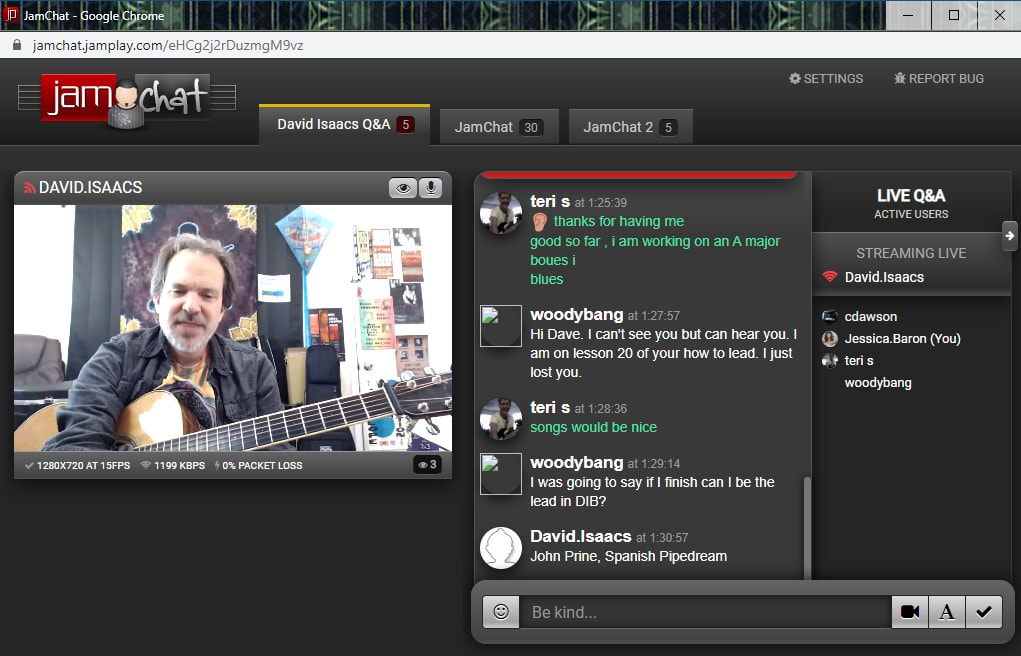 Participants are quickly learning, however, that online classes provide something even more important than the lessons themselves, and that is the innate human connection that comes along with playing music together. “It is a great outlet, a great way to still collaborate with others, and a nice break in my remote teaching day when it is something just for me,” explains Emily. Catherine Thomsen agrees. “Music offers hope and is a universal language we can all connect with. It helps to calm fears and anxiety.” Joan Maute is enjoying watching her students challenge themselves, support one another, and grow in their musicianship. She is also seeing the magical effects GITC programming is having on some of the family members quarantining with her students! “Last week, one of the teachers -- her kids are home -- so she and her son wrote an amazing song about Corona [virus] and it had a great line like ‘when it’s all over, we’ll hug, hug, hug!’ And she was playing and singing and her two sons were singing backup for her. It was amazing!” gushes Joan. So is she in it for the long haul? Absolutely! “There’s really great interaction,” she continues. “It’s so good to see everyone’s names pop up in the chat. Even if we’re just seeing people’s names, it’s just good to be together.”  |
BlogArchives
June 2024
Categories
All
|
Copyright © 2024 Guitars In The Classroom. All rights reserved.
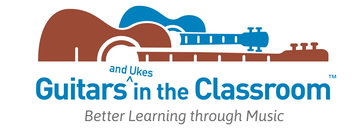




















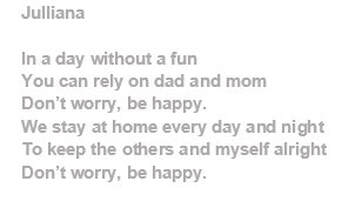

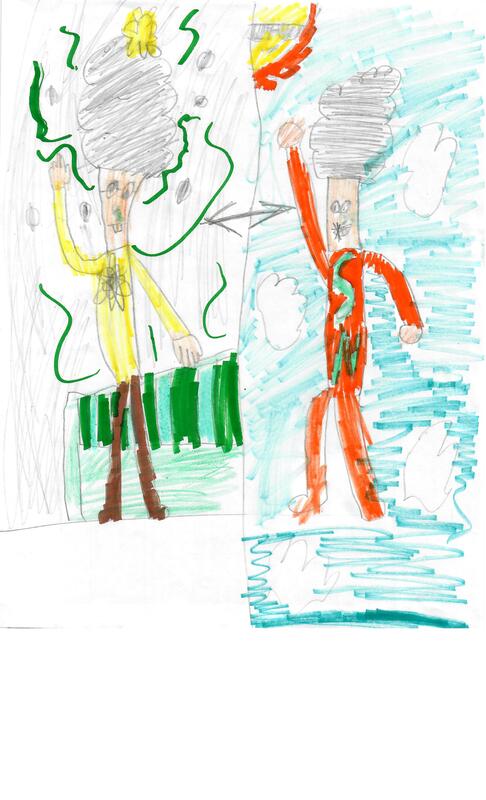
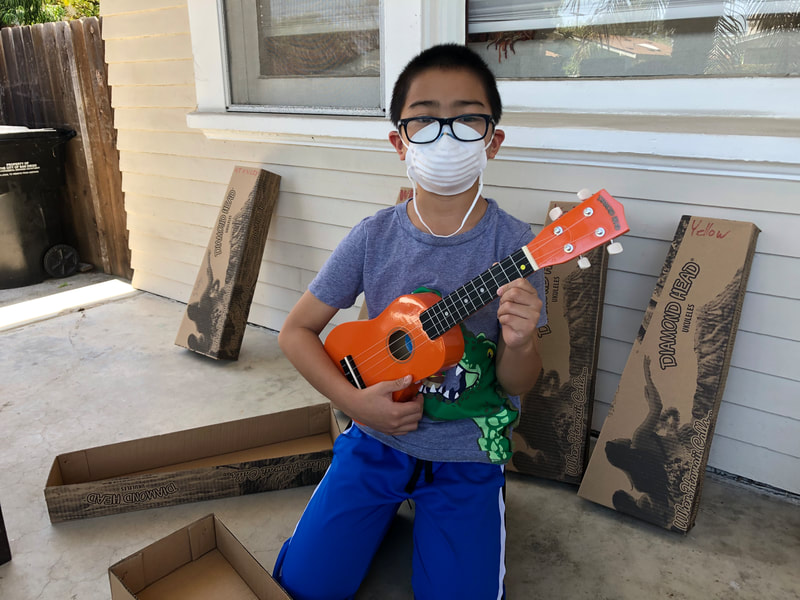





 RSS Feed
RSS Feed